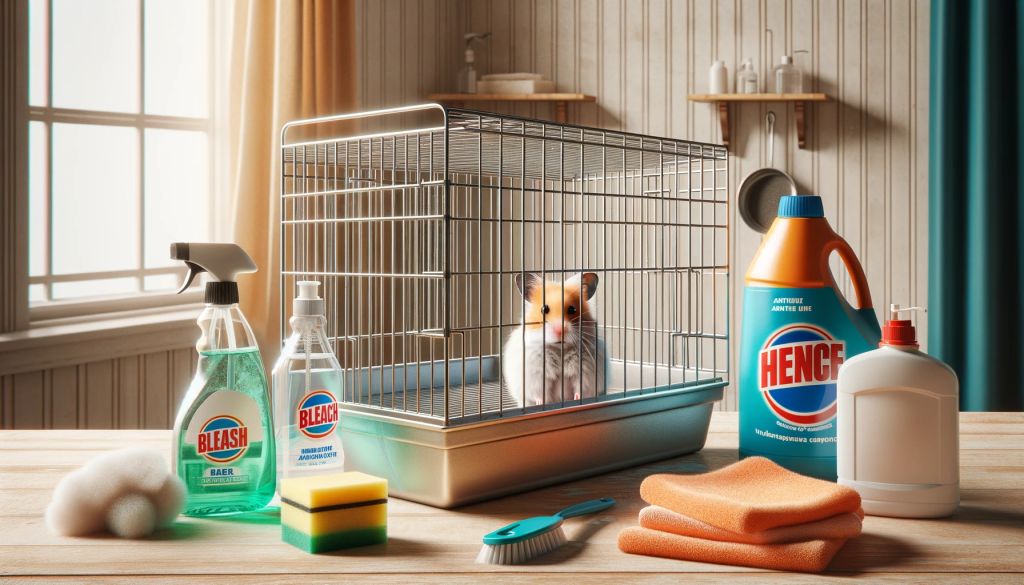Establishing a litter box within your hamster’s living space is essential for hygiene and simplifies cleaning. This custom area serves as a collection point for your hamster’s waste, contributing significantly to the overall tidiness of the cage.
![[How To]Designing a Dedicated Litter Box for Your Hamster](https://hamsterpal.com/wp-content/uploads/2023/12/Designing-a-Dedicated-Litter-Box-for-Your-Hamster-1024x585.png)
Here’s an expanded guide on crafting a litter box for your hamster:
Box Selection
Start by choosing a container that’s slightly larger than your hamster, ensuring they can comfortably enter and turn around inside it. The material should be non-toxic, sturdy, and easy to clean.
Customizing the Box
Modify the box to a practical size and shape, considering your cage’s dimensions and your hamster’s accessibility. Smooth out the edges to prevent any harm to your pet.
Filling Material
Opt for pet-safe absorbent sand or hamster-specific litter to line the box. The depth should be sufficient to soak up liquids but not so deep as to make entry or exit challenging for your hamster.
Cover Creation
While optional, a cover can be fashioned with an entrance hole to give your hamster privacy and to keep the cage neater. Ensure the cover is removable for easy cleaning.
Training for Usage
Acclimate your hamster to their new litter area by placing them in the box after meals or when they wake up, as these are times they’re likely to relieve themselves. Use treats and gentle encouragement.
Maintaining Cleanliness
Daily removal of soiled litter and replenishment with fresh material is recommended. A thorough cleaning of the entire box should be done weekly to prevent bacterial growth and odor.
Individual Litter Boxes
If you have multiple hamsters, particularly in separate cages, provide each one with its own litter box. This minimizes the risk of transmitting infections and maintains individual health.
Positioning
Place the litter box in a corner of the cage that your hamster seems to prefer for doing their business. Hamsters tend to choose a specific spot, so observe their behavior to determine the best placement.
Litter Box Material
Consider materials that won’t harm your hamster if ingested. Avoid clumping cat litter or anything with strong fragrances. Natural paper-based or wood pulp products are generally safe choices.
Avoiding Common Issues
Sometimes hamsters may sleep or eat in their litter box. To discourage this, keep the sleeping area cozy and separate and only place food in designated eating areas.
Adjustments and Adaptations
Monitor your hamster’s interaction with the litter box. You may need to make adjustments or try different training techniques until they are consistently using the box.
Health Monitoring
Regularly cleaning and inspecting the litter box also allows you to monitor your hamster’s health through their waste. Changes in urine or feces can be early indicators of health issues.
By integrating a litter box into your hamster’s environment and maintaining it with diligence, you create a healthier and more pleasant living space for your furry friend and ease the cleaning process for yourself. This addition to your hamster’s cage will enhance their quality of life and can significantly reduce the occurrence of unwanted odors in your home.
![[How To]Designing a Dedicated Litter Box for Your Hamster](https://hamsterpal.com/wp-content/uploads/2023/12/Designing-a-Dedicated-Litter-Box-for-Your-Hamster.png)


